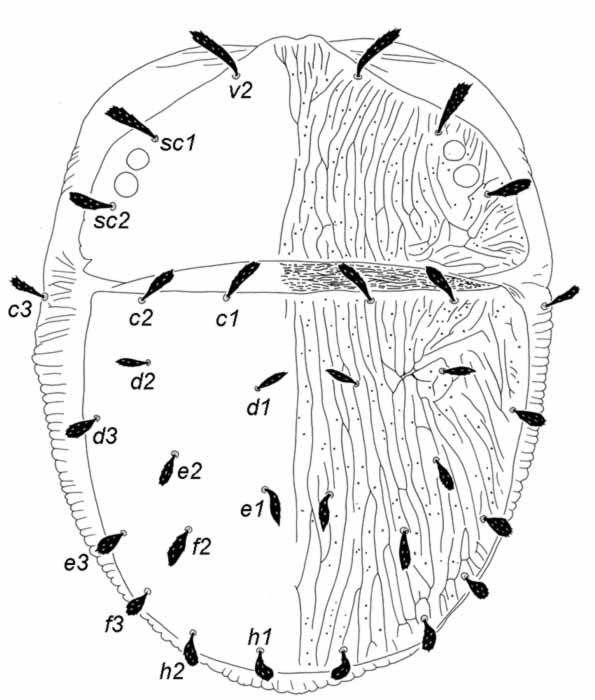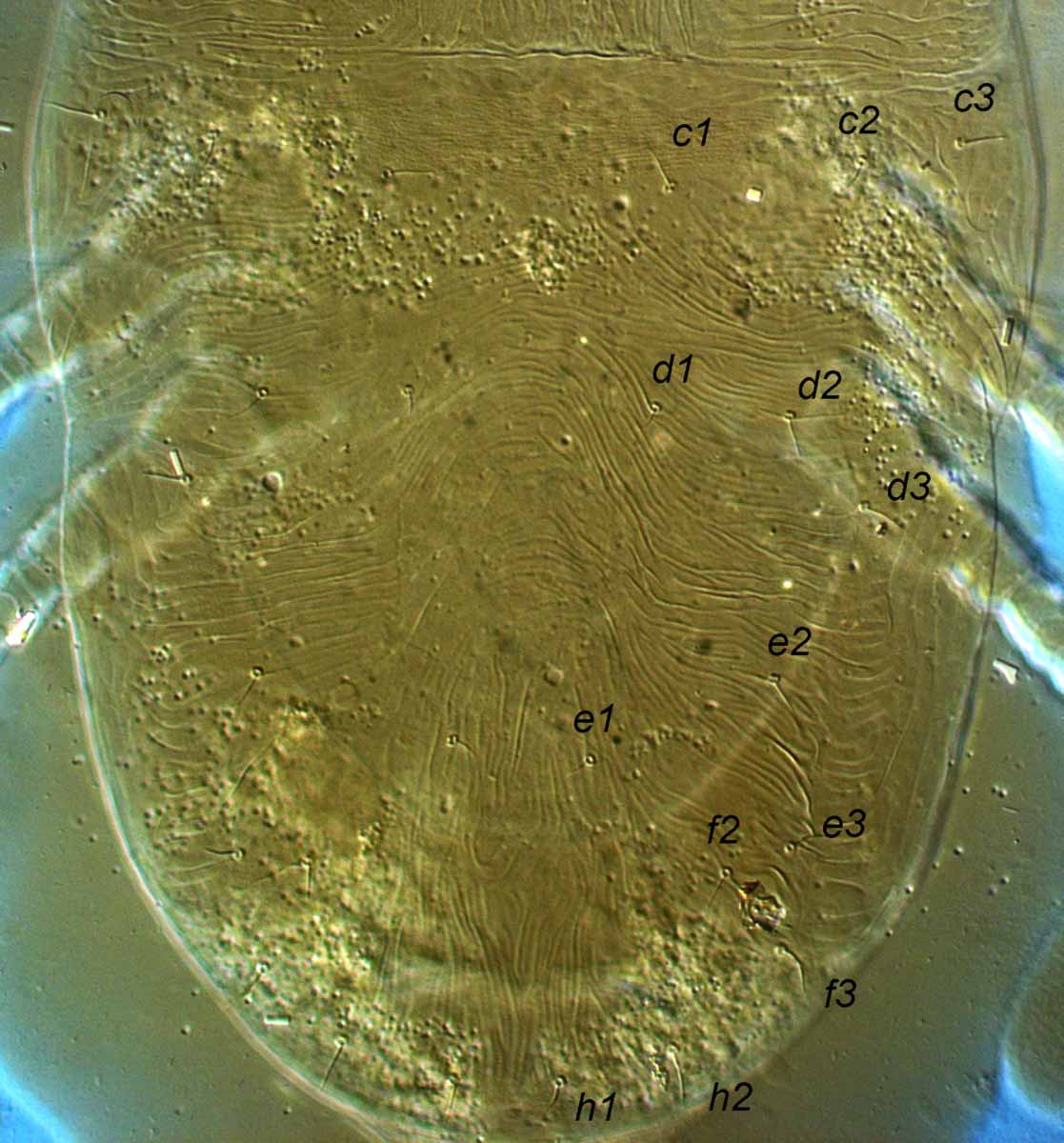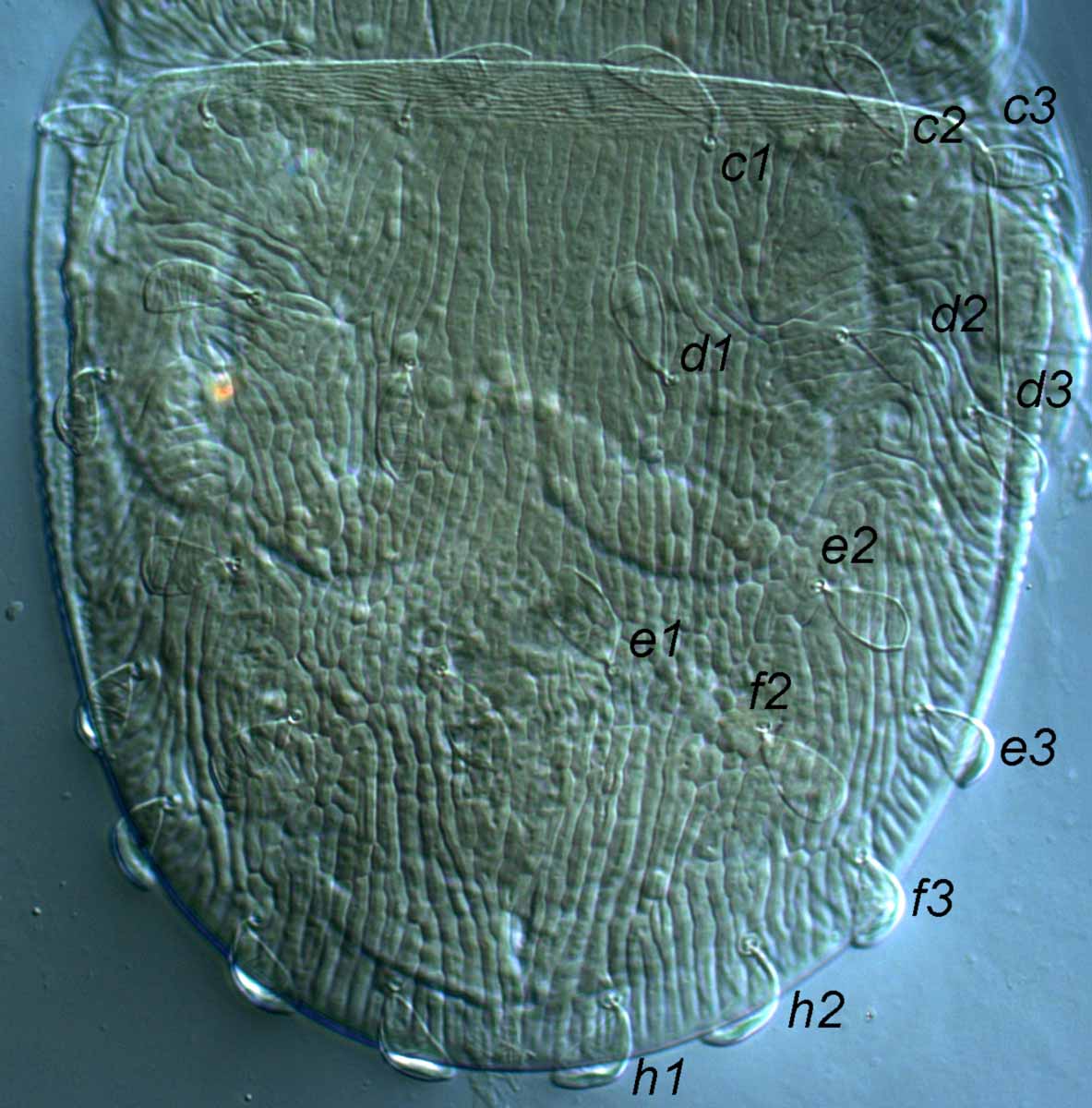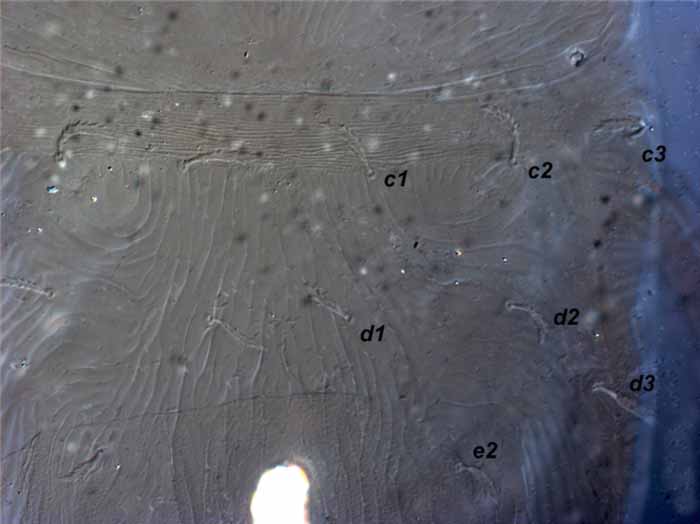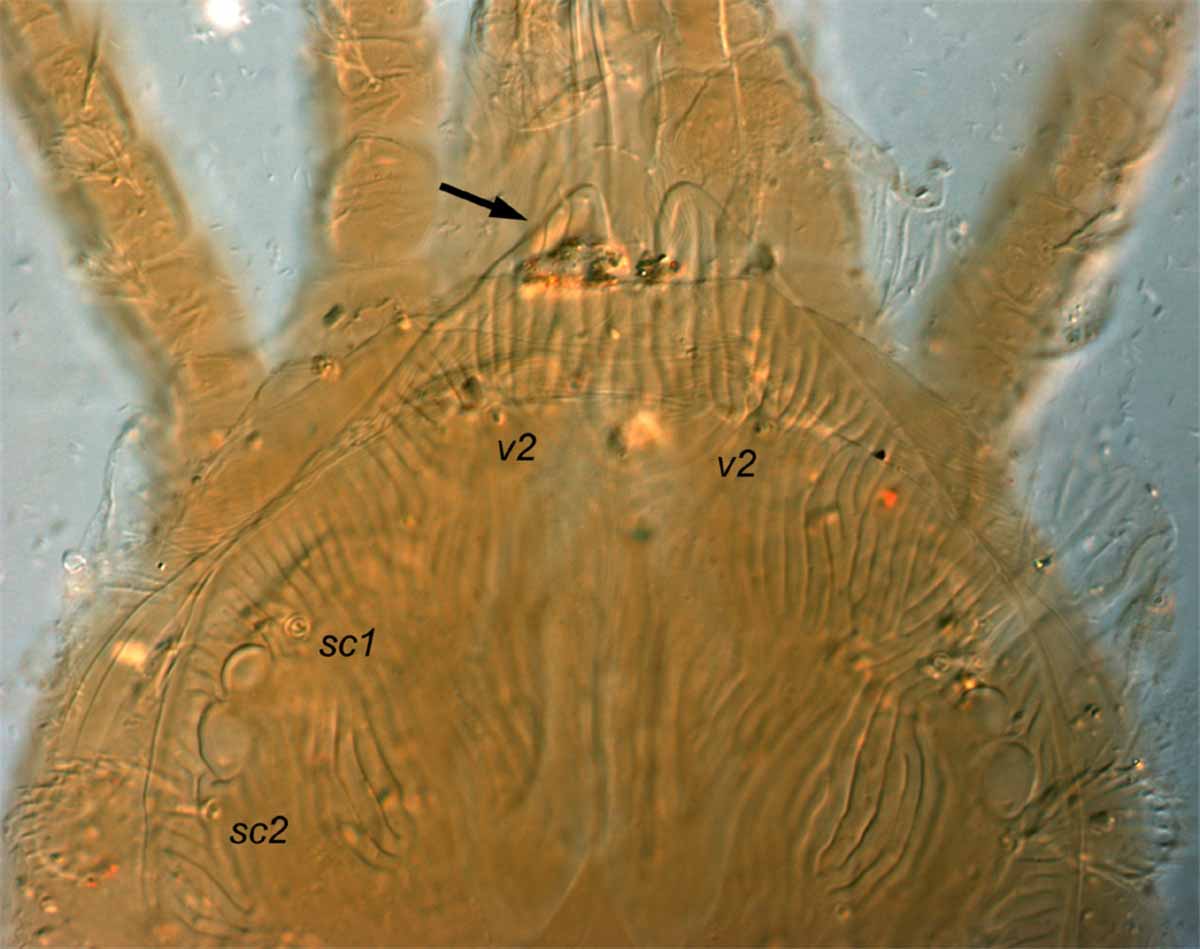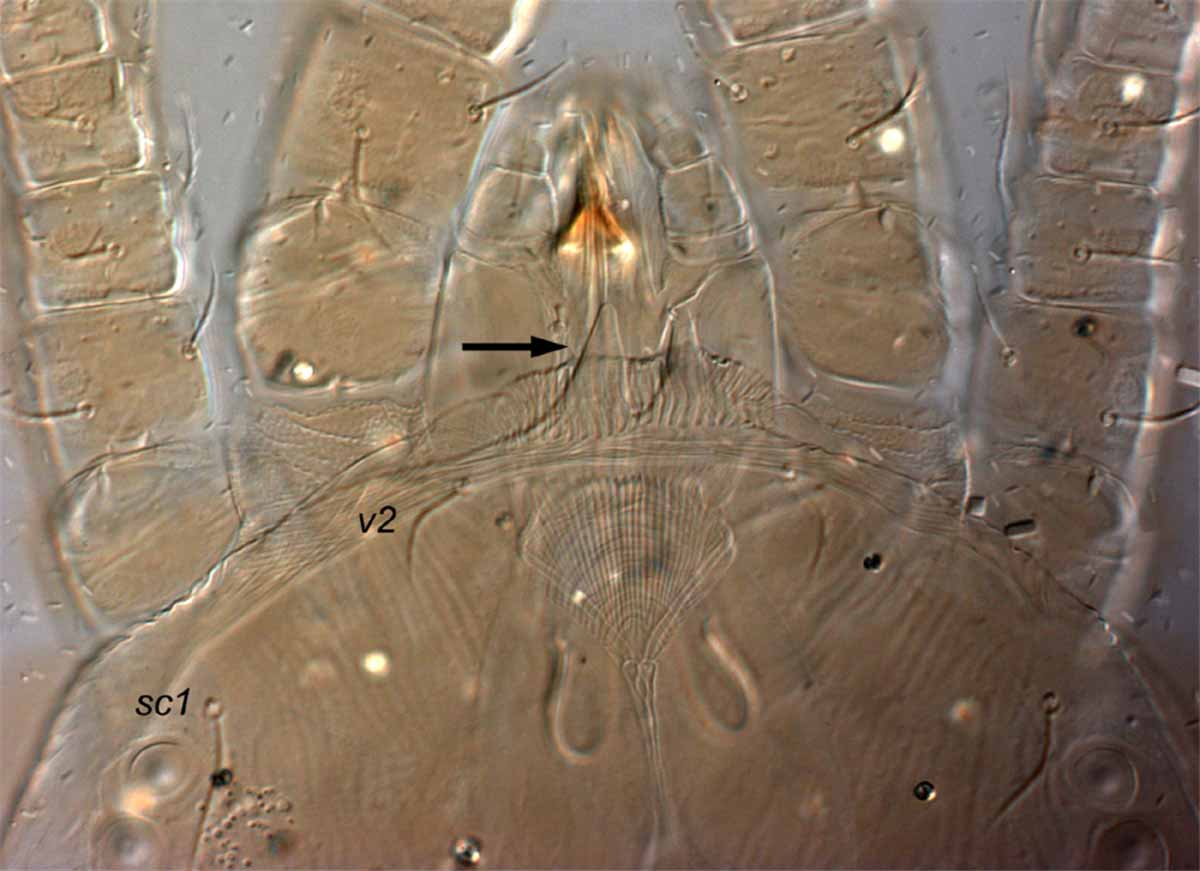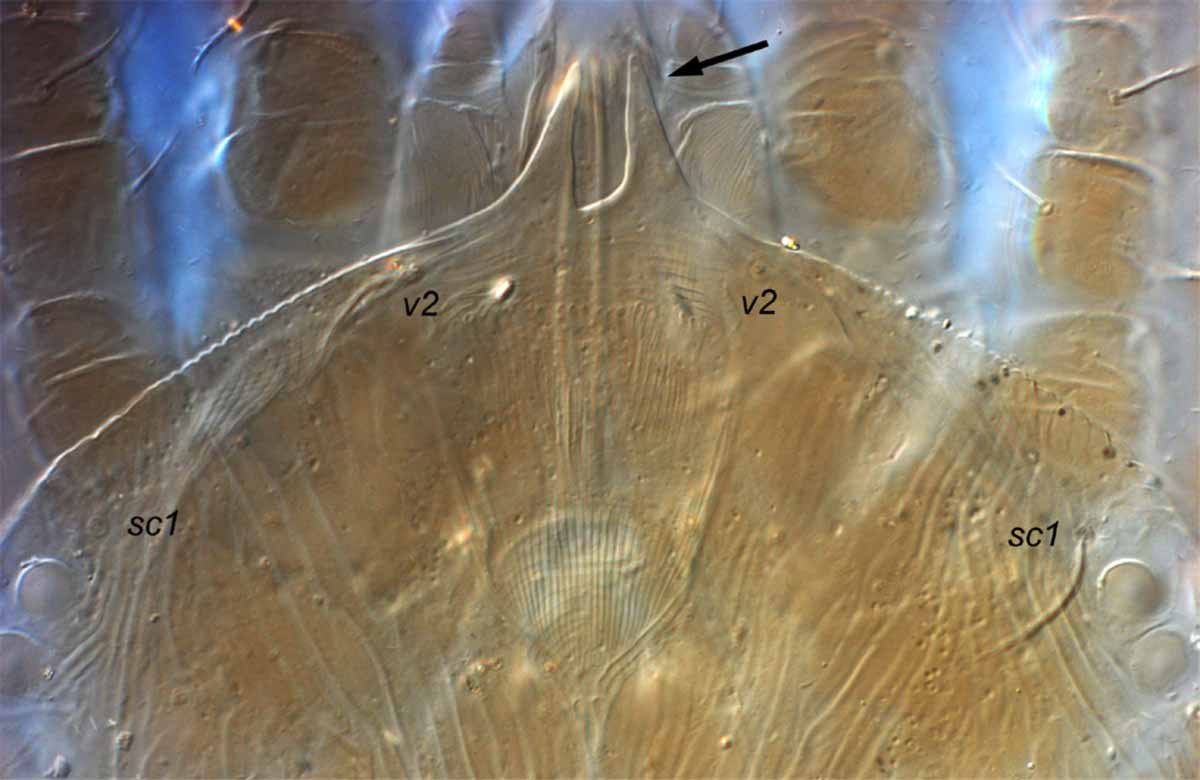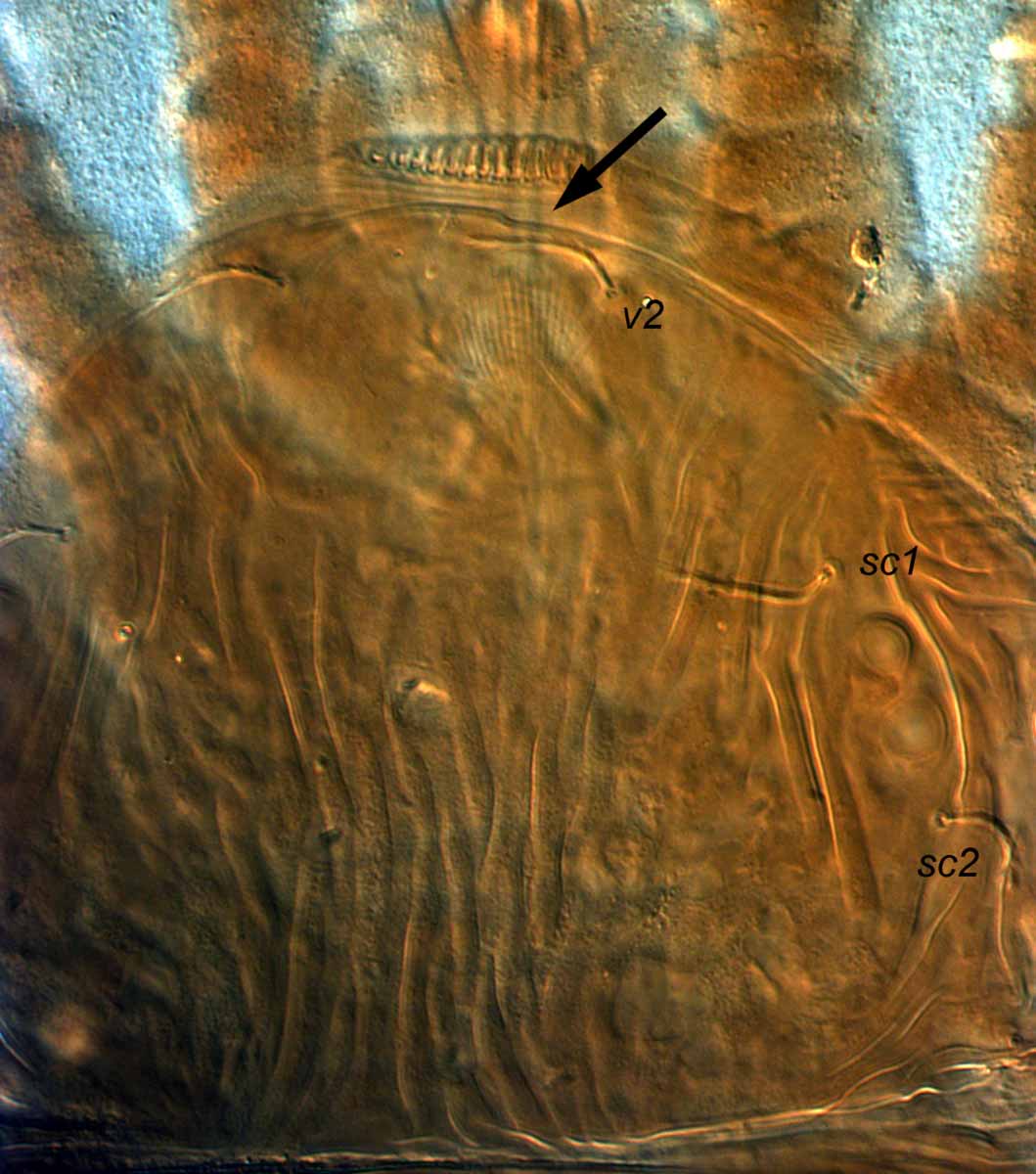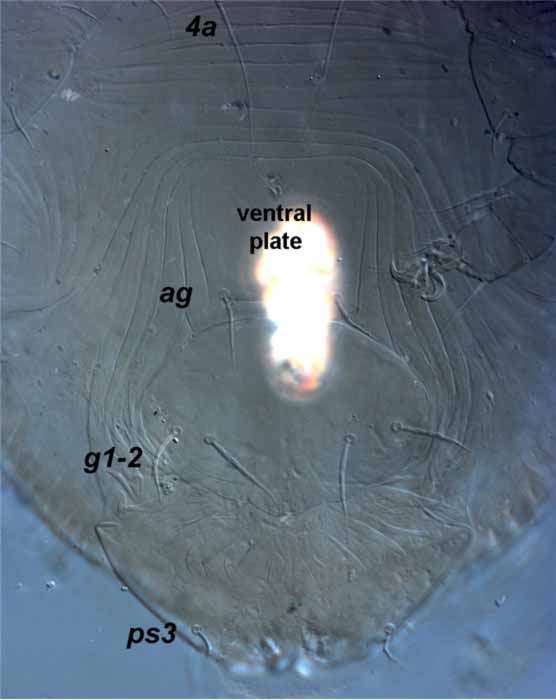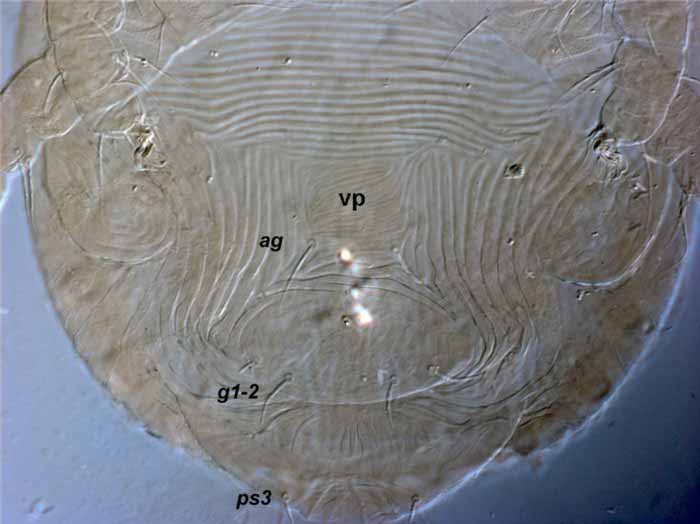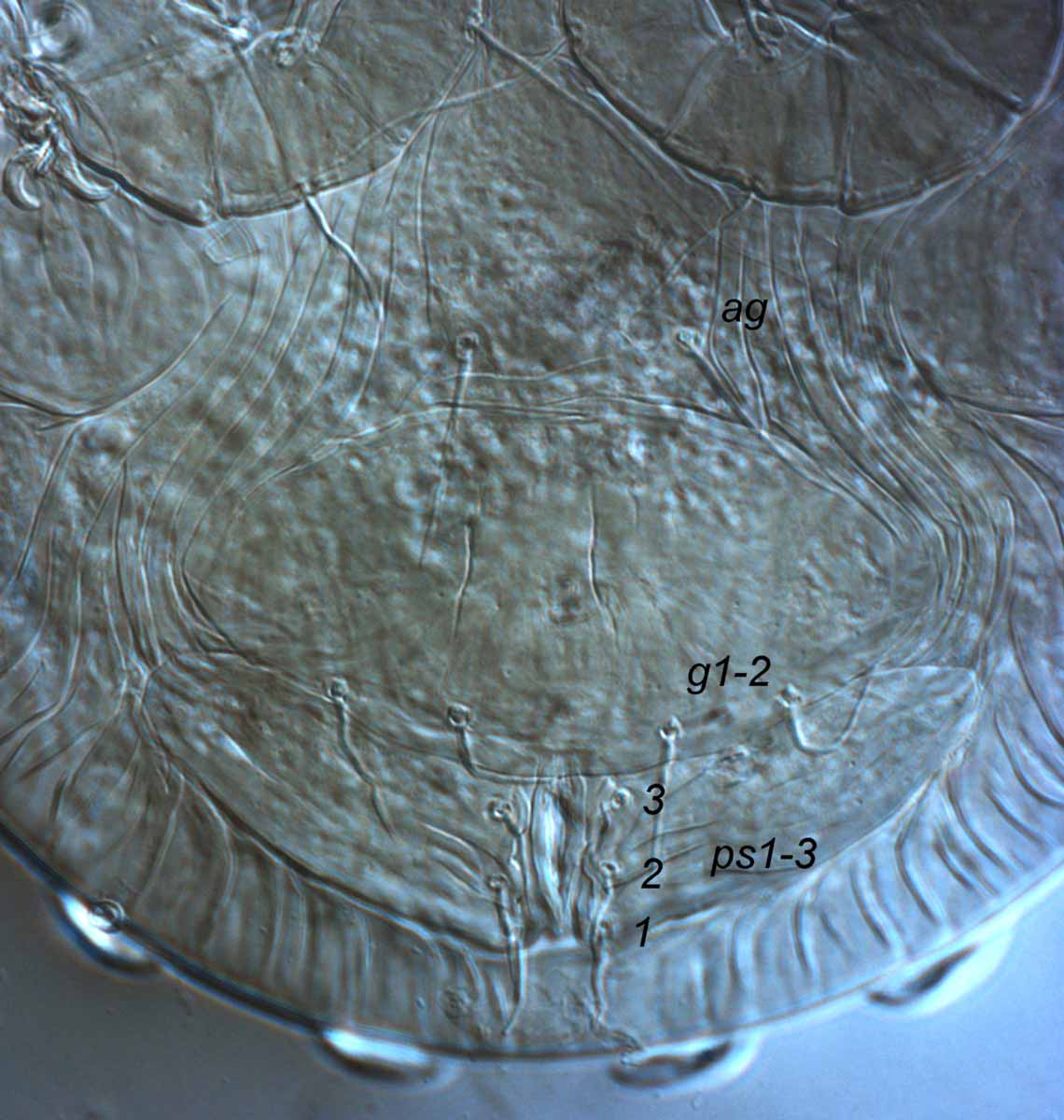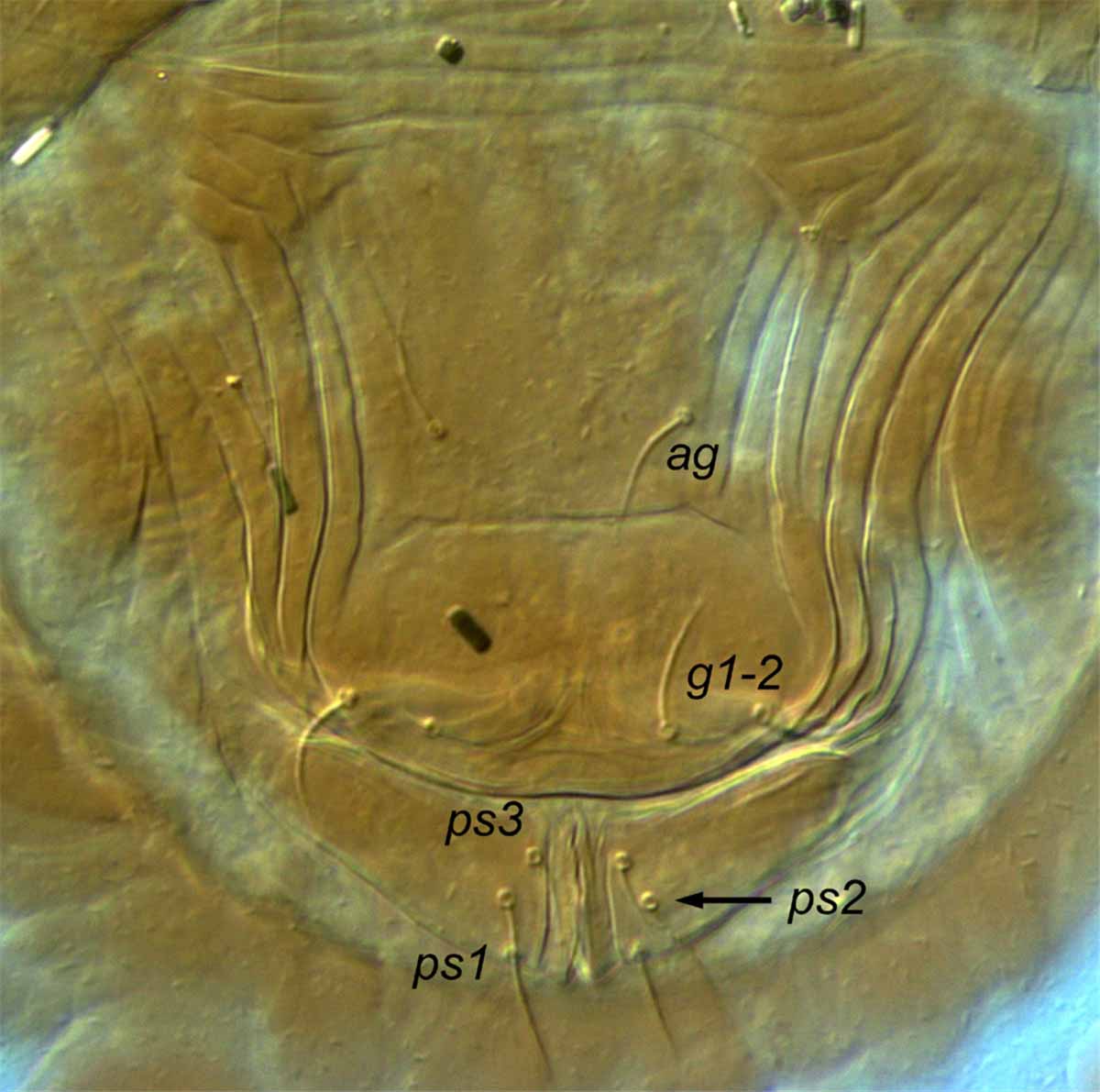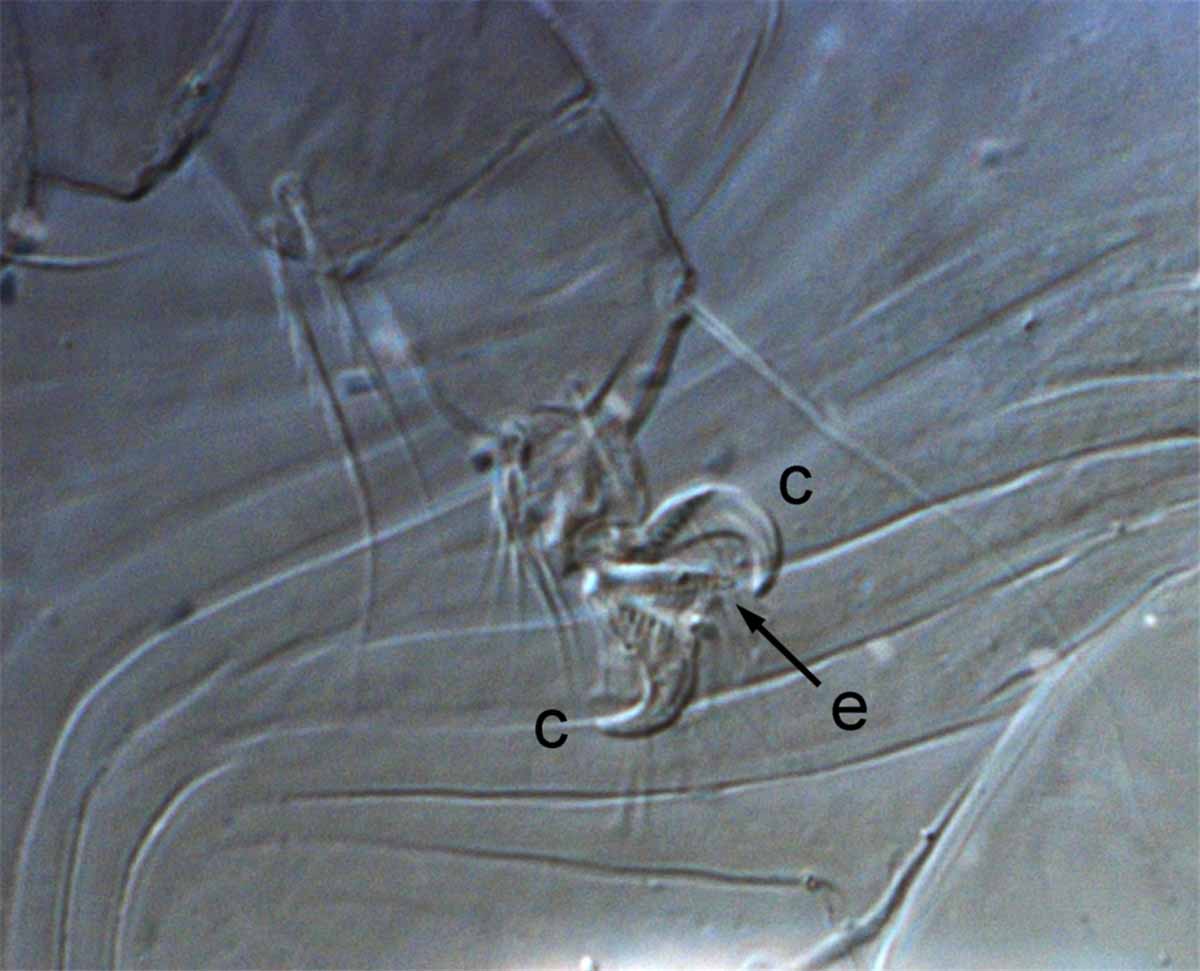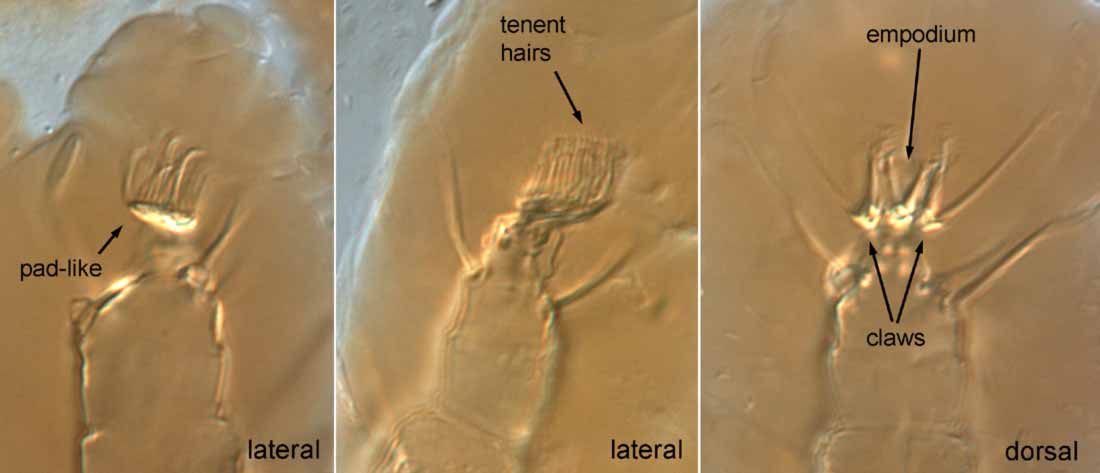Aegyptobia
|
Fig. 1. Aegyptobia yertle female dorsum. |
|
Fig. 2. Aegyptobia pseudoleptoides female dorsal opisthosoma (type specimen). |
|
Fig. 3. Aegyptobia baptus female posterior dorsum (type specimen). |
|
Fig. 4. Aegyptobia alpinensis female anterior opisthosoma (type specimen). |
|
Fig. 5. Aegyptobia baptus female prodorsum (type specimen). |
|
Fig. 6. Aegyptobia vannus female prodorsum (type specimen). |
|
Fig. 7. Aegyptobia alpinensis female prodorsum (type specimen). |
|
Fig. 8. Aegyptobia nomus female prodorsum (type specimen). |
|
Fig. 9. Aegyptobia pseudoleptoides female prodorsum (type specimen). |
|
Fig. 10. Aegyptobia torreyi female prodorsum (type specimen). |
|
Fig. 11. Aegyptobia alpinensis female genital region - note the ventral plate indicated by change in striae on cuticle (type specimen). |
|
Fig. 12. Aegyptobia antenosoma female genital region (vp = ventral plate) (type specimen). |
|
Fig. 13. Aegyptobia baptus female posterior venter (type specimen). |
|
Fig. 14. Aegyptobia nomus female posterior venter (type specimen). |
|
Fig. 15. Claws (c) are claw-like and empodium (e) is pad-like. |
|
Fig. 16. Aegyptobia nomus female - claws are pad-like and empodium is pad-like (type specimen). |
|
Fig. 17. Aegyptobia alpinensis female leg III indicating femur III (fe) with dorsal seta d present (arrow) (type specimen). |
Key characters
- with the full complement of dorsal setae (Figs. 1-4)
- e2 and f2 inserted in a submarginal position (Figs. 1-4), not inserted on the margin
- h2 not elongate
- gnathosoma fully exposed, not concealed by prodorsum
- anterior margin of prodorsum variable: with notch anterior to v2 (Figs. 5-7); with a forked projection (Figs. 8, 9; grass-associated species); or smoothly rounded (Figs. 1, 10)
- ventral plate distinctly indicated by change in cuticular pattern (Figs. 11-14)
- 3 pairs ps setae usually inserted in a more or less longitudinal line (Fig. 13); however grass-associated species may have ps inserted in a triangle pattern (Fig. 14)
- 5 segmented palp
- shape of claws variable: most species with claw-like claws and pad-like empodium (Fig. 15); grass-associated species with pad-like claws and pad-like empodium, both with tenent hairs (Fig. 16)
- femur III with dorsal seta d absent (Fig. 17)
- male with solenidia of similar shape and size to those of female
Similar taxa
Meyeraepalpus - gnathosoma partially concealed beneath prodorsum; seta d absent on femur III; males with swollen solendia
Pentamerismus - e2, f2 (when present) inserted along lateral margin
Palpipalpus - 2 pairs ps setae; e2, f2 inserted in almost marginal position
Phytoptipalpus - 2 pairs ps setae
Pseudoleptus - the grass-associated species of Aegyptobia (in macswaini species group) are very similar to the genus Pseudoleptus. There is not one consistent difference that can be used to separate these two groups. Both have an acutely pointed forked projection on the anterior margin of the prodorsum and pad-like claws and empodium. Pseudoleptus has 3-5 segmented palps (most commonly 4-5 segmented), usually with a pair of mesonotal shields between the c-setae and d-setae (see Pseudoleptus fact sheet), ps1-3 arranged in a triangle pattern (grass-associated Aegyptobia may also have ps setae arranged in weak triangle pattern, Fig. 14)
Number of species
over 95
Authority
Mitrofanov
Distribution
World wide.
Most species are recorded from Nearctic (32 spp.) and Western Palearctic (26 spp.) regions.
Species-rich countries include: Egypt, Greece, Iran, Iraq, Mexico, United Arab Emirates, USA.
Hosts
Broad range of species from several families, including many tree species. Common families include: Asteraceae, Chenopodiaceae, Cupressaceae.
Colour
- orange to red when alive
- eggs red
Remarks
Aegyptobia ericae was incorrectly recorded with setae f2 absent in the literature. With the help of our colleague Eddie Ueckermann (South Africa), we have established that setae f2 are in fact present.
Several species of Pentamerismus and Aegyptobia have been described with only 2 pairs of ps setae, and once this is confirmed these species should be placed in the genus Phytoptipalpus. For example, Pentamerismus collinus and Aegyptobia albizae, A. parcus, A. sonhanraensis. See also Seeman and Beard (2011).

